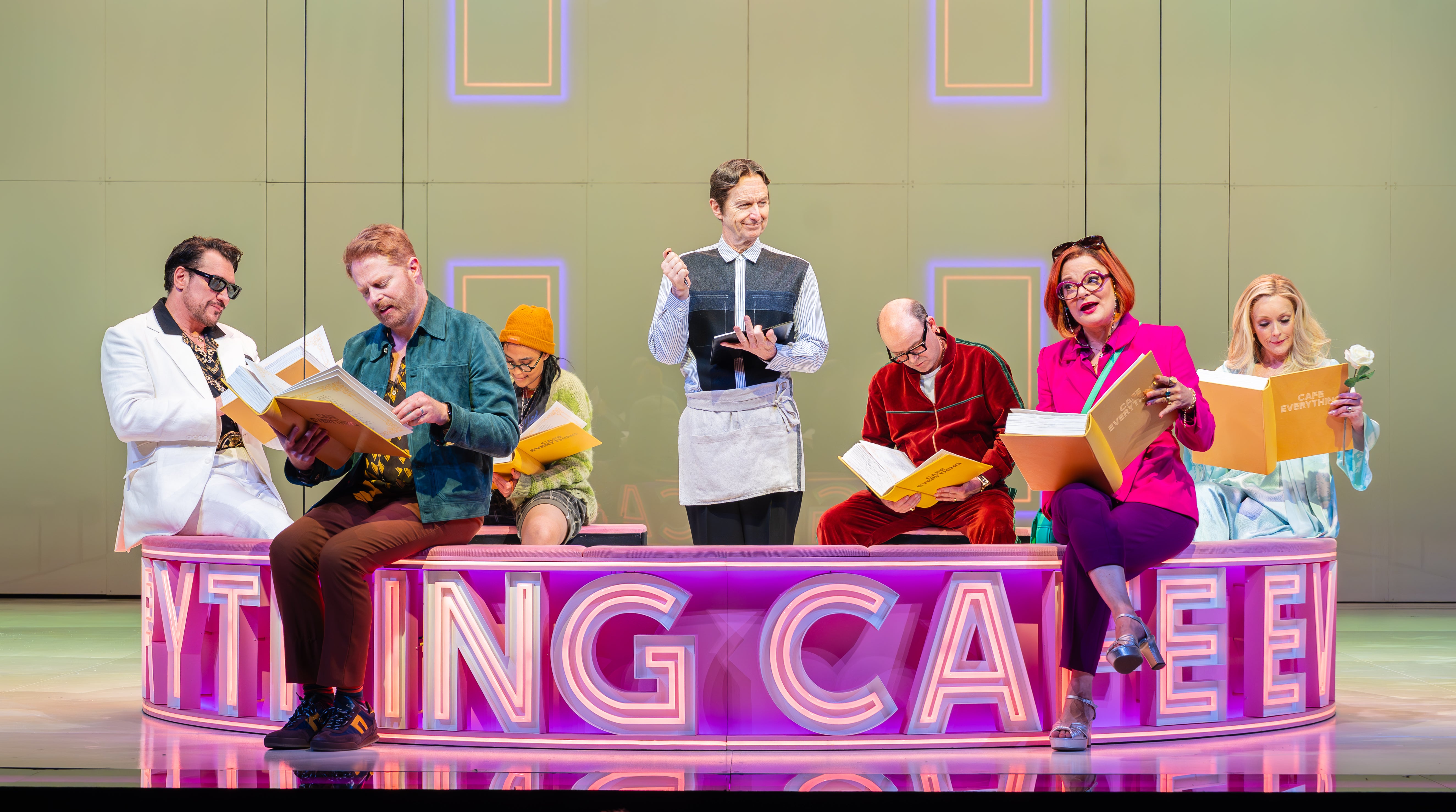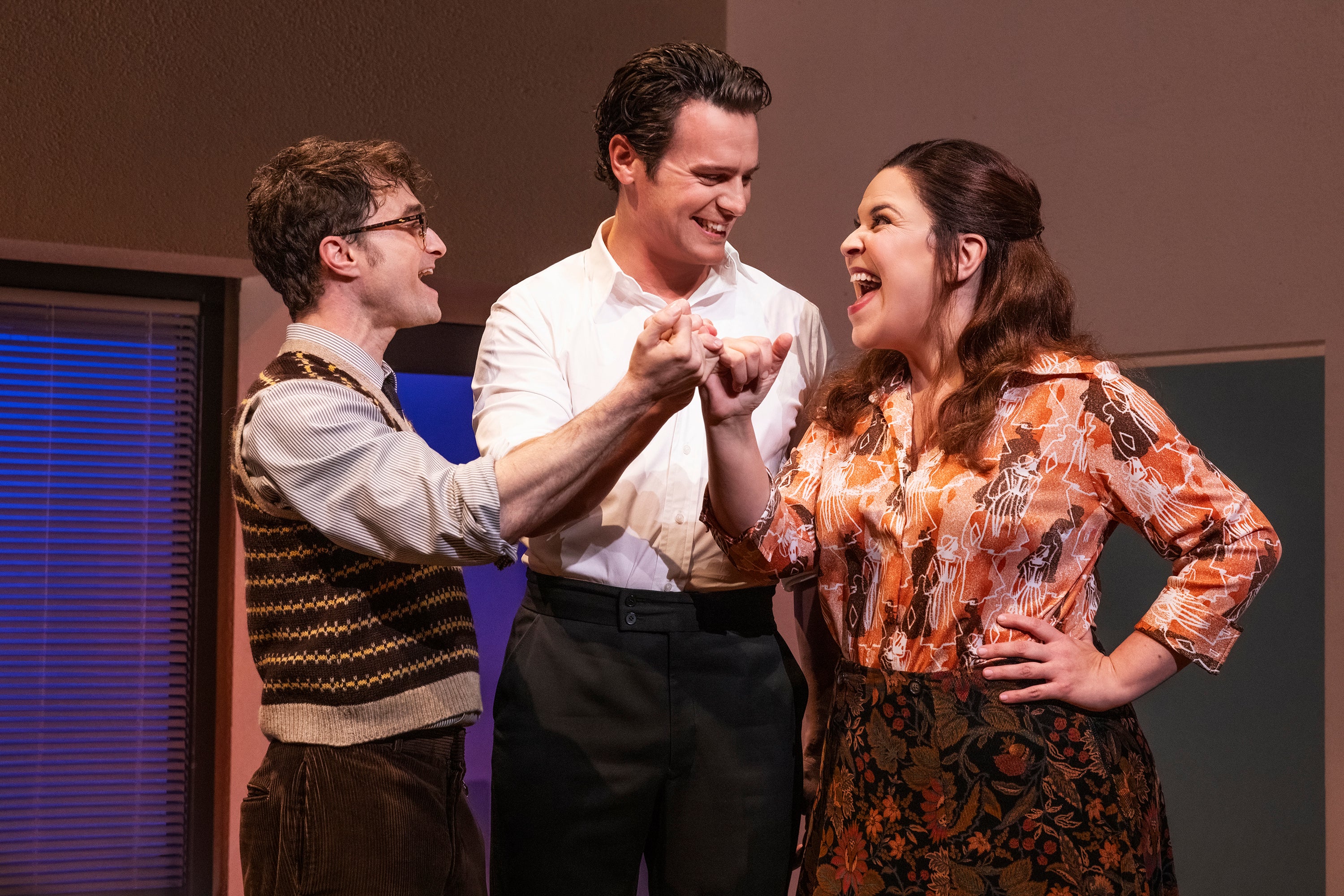ARTICLE AD BOX
A serial-killing barber crooning sweetly to his murder weapon. A domineering “stage mom” breaking down over her own misspent life. A pair of teenage lovebirds getting married against their parents’ instruction. An artist, painting a hat. What do these seemingly disparate scenarios have in common? It’s what’s coming from these people’s mouths: the beautiful, profound, preternaturally elegant music of Stephen Sondheim.
It’s been slightly over three and a half years since the monolithic composer and lyricist died suddenly at the age of 91, leaving behind as rich a body of work as any. His oeuvre spans some of the most acclaimed and significant pieces of musical theatre ever written – Sweeney Todd: The Demon Barber of Fleet Street, Gypsy, Company and West Side Story. Both Broadway and the West End have theatres named in his honour, both names unprecedentedly bestowed while he was still alive. Sondheim’s final work, Here We Are, is only now reaching British shores, via an inaugural West End production at the National Theatre.
In the public imagination, musical theatre is often reduced to a few glaring ambassadors: the never-ending, money-spewing behemoths such as Wicked or Hamilton, or else the onslaught of garish jukebox musicals or stage adaptations of popular films. There is something deeply comforting, therefore, in the fact that Sondheim’s musicals – challenging, inventive, substantial – are still able to command the most coveted stages in theatre, that there is still such a tremendous appetite for his work. HereWe Are comes just shortly after a phenomenally successful revival of Sondheim’s Merrily We Roll Along on Broadway, and a gender-flipped version of Company on the West End, which topped the Olivier Awards in 2019. Jake Gyllenhaal fronted a glowingly received American production of the composer’s Sunday in the Park with George (only to have its London transfer scuppered by Covid). There’s more, too, on the horizon: Sondheim’s 1986 opus Into the Woods is set to be revived at London’s Bridge Theatre later this year. His work feels as alive now as it did when it first upended the complacent norms of musical theatre itself, all those years ago.
The cast of Here We Are includes Jesse Tyler Ferguson (Modern Family), Rory Kinnear (Bank of Dave), Jane Krakowski (30 Rock), Martha Plimpton, and Denis O’Hare. Based on two surrealist films by European arthouse filmmaker Luis Buñuel, The Exterminating Angel and The Discreet Charm of the Bourgeoisie, the musical is a collaboration with playwright David Ives, who wrote the book. The first half sees a group of eclectic caricatures travel around hunting for a place to get brunch; the second sees them stuck in an opulent room of a foreign embassy, unable to leave – though no one knows why.
“There’s a huge significance,” actor Harry Hadden-Paton, another of Here We Are’s top-tier ensemble, tells me. “Sondheim is the most beloved [figure in musical theatre], and the fact he wrote this, gave it his blessing and put his heart into it for many years… It feels important, like it needs to be seen.” Best known for roles in The Crown and Downton Abbey, Hadden-Paton here takes on a role originated by David Hyde Pierce: that of Here We Are’s kvetching shoe-fetishist bishop. “I’m a terrible priest,” he sings. “No, I’m in the wrong job / I keep spilling the wine / I keep crumbling the wafers / I have no charisma.”
Here We Are bears many of the composer’s hallmarks: musically dextrous lyrics, for one, rich in wordplay. (“We do expect a little latte later but we haven’t got a lotta latte now,” sings O’Hare’s waiter, in what might be the show’s standout comic number.) It’s tonally sophisticated and unafraid of dissonance; the story is challenging and high-concept. The cast, too, are good, and they need to be: Sondheim’s is a famously difficult style to sing well. Actors such as Bernadette Peters and Mandy Patinkin have made their reputations on being able to meet the unique challenges of a Sondheim score; many talented others have struggled. “He was the master of making it so precise,” says Richard Fleeshman, who stars in Here We Are as a loved-up soldier. “It becomes like an addiction for the ear. That specificity of timing… no one does it like him.”

“There’s no paraphrasing,” adds Hadden-Paton. “It feels like there’s not a thought in there or a line that’s wasted – no padding in any way. Every lyric is meaningful.”
Given the circumstances – the play being a posthumous swansong from a modern master – reaction to Here We Are has been somewhat muted. It is, people generally agreed, a minor work amid the most major of careers. And while it’s true that the show doesn’t have the depth or blinding insight of his best material, it’s still a substantial endeavour, lavishly staged and brimming with humour. In a three-star review for The Independent, Alice Saville described it as “a beautifully rendered curio for [Sondheim’s] fans, full of wit and dash – and a testament to his restless search for meaning in the most unexpected of places.”
History has showed, repeatedly, that Sondheim’s musicals have often gone on to outlive their harshest critics. “If you look at the trajectory of the appreciation of Sondheim’s work, it grows exponentially year on year,” says Fleeshman. “He’s kind of famous for it – when his works first come out, they’re sometimes too intelligent for their own good, and it takes years for the general population to catch up and realise how utterly brilliant they are.”
Shakespeare’s appeal hasn’t been diminished, and Sondheim was often described as the Shakespeare of musical theatre
Richard Fleeshman, ‘Here We Are’ actor
Indeed, many of Sondheim’s musicals have taken decades to get their dues. His penultimate stage work was 2008’s Road Show, a fictionalised life story of socially ambitious architect Addison Mizner and his huckster brother Wilson. The show, variously known as Wise Guys, Bounce, and Gold!, enjoyed an arduous journey to completion, being rewritten and re-conceptualised multiple times over the course of a decade. When it finally ossified, it was met with a sort of respectful shrug. There are, nevertheless, flashes of brilliance in it; that it was recently revived on the London stage (in Highgate’s Gatehouse) points to a growing appreciation. Assassins (1990), a concept musical about the historical figures who attempted to kill various US presidents, was another grower; after a mixed initial reception, it has gone on to take its rightful place in Sondheim’s indispensable canon.
Perhaps the starkest case of the critics simply getting it wrong, of course, was Merrily We Roll Along. The original production hit Broadway in 1981, and closed after just 16 performances (plus 44 previews). It was, admittedly, not an easy sell – the play, which followed the lives and disappointments of a group of college graduate pals, was told in reverse chronological order. Audiences struggled to keep track of the story and which character was which. (Original cast members include Seinfeld’s Jason Alexander and Breaking Bad’s Giancarlo Esposito.) In recent years, however, Merrily has come to be embraced as one of Sondheim’s best, and remains fertile for re-interpretation: the Tony-winning recent revival with Daniel Radcliffe and Jonathan Groff proved a huge success, both critically and commercially (with a filmed version set to be released by Sony), becoming the highest-grossing production of any Sondheim musical. Boyhood’s Richard Linklater is, meanwhile, currently five years into filming a screen adaptation starring Beanie Feldstein and Paul Mescal (who was, incidentally, among the attendees at Here We Are’s London press night). “Posthumously, Sondheim’s musicals are only gonna grow,” Fleeshman adds. “Shakespeare’s appeal hasn’t [been diminished], and Sondheim was often described as the Shakespeare of musical theatre.”

Here We Are is jaggedly unconventional in its approach to musical theatre conventions. (Forget not having “a tune you can hum”; here, the music is concretely abandoned partway through the second act.) But it’s completely in keeping with Sondheim’s lifelong approach to writing, one rooted in innovation and creative subversion. His early mentorship under Oscar Hammerstein help instil the sort of traditionalist fundamentals that he would later overthrow. Company, his 1970 hit focusing on a perennial bachelor and his circle of married friends, was a pioneering concept musical, eschewing the need for a linear plot in favour of swirling ideations on a theme. Sunday in the Park with George (1984) pushed this even further, contriving an ornate musical scaffolding around the painting of an artwork by George Seurat.
For someone as towering as Sondheim, matters such as “legacy” are often too large to be quantified, too complex to be articulated. Maybe he is best thought of as a teacher, in an abstract sense. (And, sometimes, in a literal one: there’s footage on YouTube of him coaching fledgling theatre students through the intricacies of his songs. Everything about the clips, from his hyper-precise attention to detail, to his uncontained joy when a young woman nails the fiendishly quick patter of “Not Getting Married Today”, is utterly mesmerising.) “Teaching is a sacred profession,” Sondheim once said. “And art is a form of teaching.” It’s true, of course, that his great and sacred gift to humanity was his art, his music. But the years between Road Show and Here We Are saw him bestow another monumental treasure – two books of collected lyrics, titled Finishing the Hat and Look, I Made a Hat. Running through his life’s work in granular detail, Sondheim crafted one of the most revealing, impressive and erudite examinations of the creative process that has ever been published.
Both of those volumes begin with Sondheim’s four mantras – ideals that governed his entire approach to writing. They were, in brief: “Content dictates form; Less is more; God is in the details; [and] all in the service of Clarity, without which nothing else matters.” It’s hard to name any artist who has offered so much clarity to the world – emotional, psychological, and creative. He may be gone, but death cannot touch an artistry like his. Here we are, and there he is – today, tomorrow, and forever.
‘Here We Are’ runs at the National Theatre’s Lyttelton Theatre until 28 June









 English (US) ·
English (US) ·